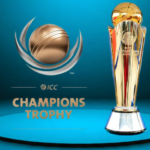International Women’s Day began in the early 20th century as part of labor and women’s rights movements.
Founder of International women’s Day: Clara Zetkin, a German activist, initiated International Women’s Day in 1910. The first celebration was held in 1911 in Austria, Denmark, Germany, and Switzerland.
The first official International Women’s Day was celebrated on March 19, 1911, in Europe.
In 1977, the United Nations declared March 8 as International Women’s Day [IMD]to promote gender equality and empower women globally.
Theme of International Women’s Day 2025: “For ALL Women and Girls: Rights. Equality. Empowerment.”
Why it is observed for:
It is observed for to,
- Celebrate the achievements of women in social, economic, cultural, and political spheres.
- Raise awareness about gender inequality and discrimination.
- Advocate for women’s rights, equal opportunities, and empowerment.
- Encourage action to close the gender gap in education, employment, and leadership.
International Women’s Day (IWD) & Challenges & the Road Ahead for Women in India
Over the years, India has witnessed significant improvements in women’s rights and opportunities:
- Economic Empowerment: Women entrepreneurs like Falguni Nayar (Nykaa) and Kiran Mazumdar-Shaw (Biocon) are leading India’s business landscape.
- Government schemes like Mudra Yojana and Stand-Up India support women-led startups and businesses.
- Education & Skill Development: Initiatives like Beti Bachao Beti Padhao and National Education Policy (NEP) 2020 focus on girls’ education.
- More women are now pursuing careers in STEM ( science, technology, engineering, and mathematics) fields, law, and entrepreneurship.
- Legal & Social Reforms: Laws such as the Protection of Women from Domestic Violence Act (2005) and Maternity Benefit Act (2017) safeguard women’s rights.
- Awareness campaigns against child marriage, dowry, and honor killings have led to positive changes in society.
- Political Representation : The Women’s Reservation Bill (2023) aims to reserve 33% of seats for women in Parliament and state legislatures, a landmark move towards gender inclusivity.
- Leaders like Indira Gandhi, Droupadi Murmu, and Sushma Swaraj have paved the way for women in politics.
Challenges Women Still Face in India
Despite progress, Indian women continue to encounter several roadblocks:
- Gender-Based Violence: Crimes like domestic abuse, sexual harassment, and trafficking remain serious concerns.
- Low Workforce Participation: India’s female labor force participation rate is one of the lowest globally.
- Patriarchal Mindsets: Social expectations often limit women’s freedom and career growth.
- Workplace Inequality: Women earn less than their male counterparts, and only a fraction hold leadership positions.
- Social Challenges: Issues like dowry, honor killings, female foeticide, and child marriage still continue to impact women’s lives.

What More Needs to Be Done?
While progress is evident, a lot more needs to be achieved for true gender equality:
- Ensure Equal Pay & Opportunities: Enforcing tougher laws and revising corporate policies can help close the gender pay gap
- Strengthen Legal Protections: to curb crimes against women.
- Encourage Entrepreneurship & Financial Independence: can boost economic participation.
- Break Societal Barriers: Education, awareness, and media representation can help gender stereotypes.
Conclusion
International Women’s Day is not just about celebration; it is a call to action.
Although India has come a long way in empowering women, still there are lots to do in this regard.
By taking right steps together we can build a future where every woman can achieve her full potential.
Rachin Ravindra: Breaking Records and Redefining New Zealand Cricket














